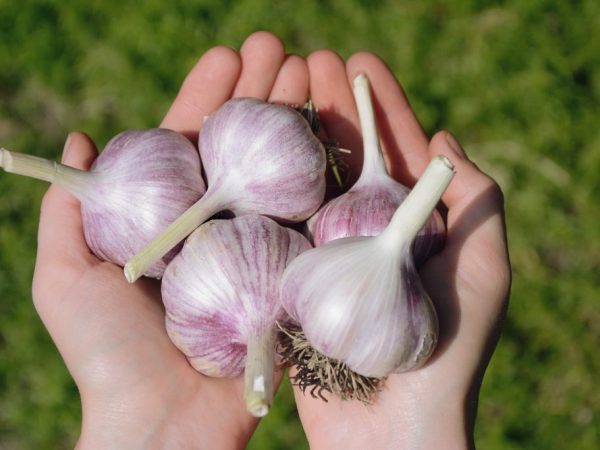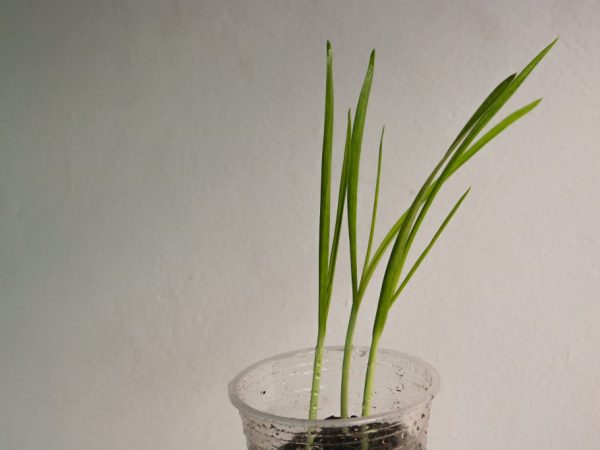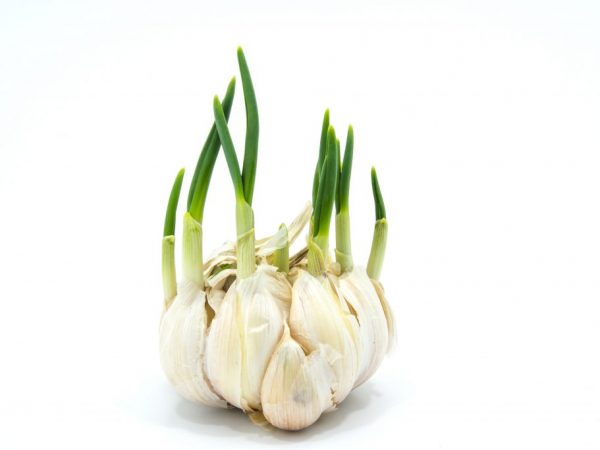Garlic growing rules
Spices have long occupied an important place in the human diet, so they are planted by both large agricultural companies and summer residents. Proper cultivation of garlic will eliminate the slightest mistake at any stage of development. What are the proven plant cultivation technologies? Let's take a look at the popular methods.

Garlic growing rules
Preparatory procedures
To harvest a bountiful harvest, you need to know the characteristics of your favorite spice. Without thoughtful agricultural work, the species will not be able to fully reveal its potential, and the yield of the variety will be minimal. There are not very many requirements, but the formation of culture depends on them.
Plot
It is better to start growing garlic by finding a suitable place. The plant is light-loving and will not tolerate the slightest shading. Planting a species under the canopy of trees or a fence will result in small, painful heads, even in species as large as the Elephant variety. You can not place the beds in the lowlands (moisture accumulates) and on the hills (the wind blows out the heat).
The root system of the spice is very weak, therefore it needs the most nutritious soil. At least a month before agricultural work, the site is carefully dug up, plant residues are removed and fed. As fertilizers, the following is applied to the soil:
- humus;
- wood ash;
- potassium;
- phosphorus.
Experienced farmers prefer not to plant garlic to other plants, but to form separate beds. For crops, cultivated fertile soils of loamy and sandy loam type with neutral acidity are suitable. If the selected location does not meet the criteria, then it is allowed to add sand and crushed charcoal.
Crop rotation
The technology of growing garlic, like garlic onions, requires farmers to carry out work taking into account successful or undesirable neighbors, predecessors. Suitable plants complement each other in the garden, helping to repel pests and resist diseases. A successful "duet" makes it possible to fully return the variety.
Choosing a place correctly, be sure to pay attention to previous landings. The accumulation of microorganisms in the soil leads to a significant decrease in yield. Crop rotation rules prohibit planting spices after:
- bulbous species (flowers, vegetables);
- root crops (turnips, beets);
- spices (cilantro, basil, mint, celery).
After nightshades, pumpkin or cabbage, you can get the most bang for your buck. Leafy greens, parsley and dill perfectly coexist with spicy spices. It is useful to plant carrots and spinach nearby in the spring. It is prohibited on adjacent beds:
- lentils;
- beans;
- beans;
- soy;
- peas.
Seed material

Garlic can be grown at home
Garlic, like garlic onions, is propagated by cloves and puffed seeds. If in the first case the harvest is obtained in a few months, then the last option makes it possible to find a spice only for the next year.Initially, the seeds from the box on the arrow are grown as sets, which later become full-fledged heads.
Before embarking on agricultural work on a hundred square meters, it is necessary to carefully sort out the planting material. The teeth should be strong and free from visible rotting symptoms. Large heads with three lobules show signs of degeneration, so they cannot be taken for reproduction. Air bulbs must be large and resilient.
Before planting, the material is etched with any suitable fungicide with the addition of trace elements. The product is diluted in water according to the instructions, after which the seeds are soaked for several minutes. Folk methods suggest treating the material with salt and copper sulfate.
Landing
Garlic is grown by different methods. It all depends on when you want to plant the plant. The technique of winter and spring sowing is practiced in Russia, China and European countries, which allows you to get a bountiful harvest with certain characteristics of keeping quality.
In the spring
Agricultural work begins in mid-spring - April 15 or 25, and you can plant it both with dry cloves and with sprouted ones. The latter option involves getting the crop a couple of weeks ahead of schedule. To do this, the seeds are soaked in warm water for three hours, after which they are covered with a damp cloth and left on the windowsill until the roots appear. Some craftsmen prefer to "wake up" the crop in cylinders on hydroponics.
They start planting when the temperature of the spring soil reaches 7 degrees. By this time, the snow should have melted and constant heat should be established. Before sowing, the soil is dug up and irrigated abundantly. The ground should be moist, but not mud.
The depth of the hole is determined by the height of the clove, multiplied by two times. For example, if a standard seed has 6 cm, then a hole is pulled out by 12. Sprouted specimens are planted very carefully, trying not to damage the roots. The action is carried out according to the scheme (in cm):
- space between rows - 20;
- the gap between the beds is 50;
- distance between heads - 10.
After the planting is formed, it is better to mulch the soil. This is a very popular procedure that saves care time. The farmer does not need to often loosen the ground, remove weeds. Plants receive natural air exchange, which is beneficial for the roots.
In winter
The technology of growing winter garlic is almost the same as in spring. The only exception is the time of the event - from September to October, before the first frost. If you start work earlier, then the culture will grow strongly and die from frost. Late plantings do not have time to grow roots, therefore, they are destroyed in winter with temperature extremes.
The spice plot is prepared two weeks before sowing. The earth is dug up, after which large furrows are made. A thick layer of a mixture of coarse sand and wood ash is poured onto the bottom of the grooves. The substance prevents contact with the ground and protects the teeth from decay.
According to the technology of growing winter garlic, planting is carried out in deep holes - from 0.10 to 0.15 m. The beds must be mulched from frost, while the thickness should not be less than 2 cm. A mixture of sawdust and peat is used as raw material. In the conditions of a little snowy winter, the ground is covered with a film. The use of greenhouses is permitted on an industrial scale.
Care
After the completion of planting work, many farmers forget about the plant. Lack of attention always negatively affects productivity. To exclude mistakes, you need to be careful about the spice.

Remember to fertilize and water the garlic
Fertilizers
After the first shoots have appeared in the spring, the soil is carefully loosened and mineral or organic fertilizing is applied. Nitrogen activates metabolic processes, which contributes to the growth and development of the heads. Substances are diluted in water to the desired concentration, after which they are slowly poured in rows.It is important that the liquid does not get on young greens, otherwise there may be burns.
The second stage of application is carried out in the spring, two weeks after the first procedure. Two tablespoons of fertilizer (nitrophoska or nitroammophoska) are diluted in a bucket of water. Each square meter of crops is watered with three liters of liquid.
The final stage of dressing takes place in July. Bulb formation begins this month, so the process must be monitored. Superphostphatic fertilizer is dissolved according to the same recipe as in the second application, but the irrigation is increased to five liters per square meter.
Watering
Garlic, which is easy to grow and care for, loves irrigation. In the southern regions, at least 7 events should be carried out throughout the growing season. When watering in the northern regions, they observe the moisture content of the soil and the abundance of precipitation. After the bulbs begin to ripen, it is necessary to shorten the procedures, otherwise keeping quality will worsen.
By the way, to maintain constant humidity before flowering, you can use a drip system. Agricultural technology of large farms provides for complex multifunctional units. At home, homemade equipment is used for watering.
In addition to loosening the soil and irrigation, the arrows need to be removed from the crop. Plants without an air capsule consume all the nutrients to form heads, not seeds. Several large specimens are left as future planting material.
Harvesting and storage

Leaves tell about ripeness
How long does it take to develop and ripen a spice? A crop planted for the winter is ready for harvesting 100 days after germination. Most often, this date will come in handy at the end of July, and the spring must be dug in early August. If the lower leaves of the garlic turn yellow, then this is a characteristic sign of ripening: the bulbs are covered with thickening scales, staining in a color specific to the variety.
The signal for harvesting will be the yellowing of the leaves, their lodging. Depending on the weather, this can occur from late August to mid September.
Harvesting is carried out in dry weather, in the morning or in the evening. It is important not to hold out until the last moment, otherwise overripe heads fall apart in the ground and have poor keeping quality. During the procedure, each bush is dug in with a shovel, after which the plant is carefully pulled out by the upper leaves. It is forbidden to knock the soil from the garlic on hard surfaces.
The dug specimens are laid out to dry in a warm, shaded place for 3-5 days. The tops are not immediately cut off, otherwise natural assimilates will be destroyed inside the bulb. Arrows and foliage are removed after the product is dry.
The spice for seeds is harvested a week before the main harvest. The air boxes are cut off, tied in bundles, left on open currents or a summer cottage window to "ripen". You can not keep planting material in the sun and rain.
You don't need a lot of space to store winter and summer garlic. Most often, housewives collect heads in braids, which they hang in the closets and in the kitchen. You can cut off the tops, leaving a 6 cm stump, and lay out the crops in cardboard boxes in the cellar.
Possible problems
A spicy spice is a very unpretentious crop and, with proper cultivation, diseases and pests are excluded. If someone violates the rules of crop rotation, does not calibrate the seeds or plant seedlings incorrectly, then a negative result will not be long in coming. In a home environment, it is easy to spot the problem early on.
The most common diseases in garlic are fungi. If the plant has caught an ailment, then the treatment is useless here. The mycelium spreads over the leaves, roots and goes into the ground. No other plants can be grown on such an area without pretreatment with chemicals.
Characteristic signs of diseases
- rotting of the bulbs;
- sores on the teeth;
- plaque on the tops;
- dying off of the upper part of the plant;
- unpleasant odor.
The most harmful insects are onion flies and their caterpillars. In addition, thrips, moths and stem nematodes are involved in the destruction of crops. To scare off parasites, you can plant calendula and chicory in the garden.
The popular spice takes root well in any garden. Growing garlic won't be a problem if you know how to plant and care for it. Thanks to our recommendations, feeding, watering and cleaning will not be a secret for you.


